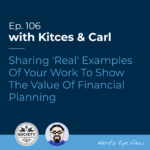Enjoy the current installment of “Weekend Reading For Financial Planners” – this week’s edition kicks off with the news that the SEC’s proposed “Safeguarding Rule” would significantly increase the number of investment advisers deemed to have custody of client assets and increase paperwork requirements for advisers and qualified custodians, though the contours of a final regulation remain uncertain.
Also in industry news this week:
- Why the behavior of some TAMPs and investment advisers might have led the SEC to propose its new (and potentially burdensome) ‘outsourcing rule’
- Why independent broker-dealers could become major players in RIA M&A in the coming year
From there, we have several articles on advisor marketing:
- How to craft engaging calls to action on an advisory firm website
- Steps advisors can take to grow and manage an effective marketing email list
- 5 features that can make an advisor’s website a more valuable marketing tool
We also have a number of articles on tax planning:
- How advisors can help their clients avoid an IRS audit this tax season
- How major life changes, such as a move or a new job, can affect a client’s tax returns
- A review of the best tax preparation software tools for a variety of tax situations
We wrap up with three final articles, all about personal development:
- Why showing poise, the combination of style and substance, is often at the heart of a successful career
- Why it can be valuable to have “permission to suck” when it comes to trying new things
- Why a little bit of self-doubt can help individuals make better decisions
Enjoy the ‘light’ reading!






 Welcome back to the 321st episode of the Financial Advisor Success Podcast!
Welcome back to the 321st episode of the Financial Advisor Success Podcast!
